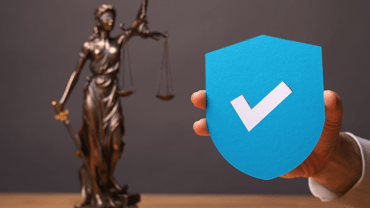 Briefing
Briefing
SB 114 Extends COVID-19 Supplemental Paid Sick Leave
On February 9, 2022, Governor Gavin Newsom signed into law SB 114 (Committee on Budget and Fiscal Review Employment: COVID-19: supplemental paid sick leave. Statutes of 2022), extending California’s COVID-19 supplemental paid sick leave program a second time. While the law becomes effective on February 19, 2022, it will apply retroactively to leaves taken on and after January 1, 2022 and is set to expire on September 30, 2022.
As signed into law, SB 114 reestablishes the COVID-19 supplemental paid sick leave for California employers who have more than 25 employees. That program had expired on September 30, 2021.
Under this law, most covered employees will be entitled to up to 80 hours of COVID-19 supplemental paid sick leave in addition to any paid sick leave available to the employee under existing law. The leave entitlement is split into two 40-hour batches. The hours a covered employee is entitled to will depend on whether an employee is considered full time or part time. Furthermore, SB 114 specifies that firefighters’ entitlement is calculated in a different manner.
Full time employees who were scheduled to worked or were scheduled to work 40-hours per week, two weeks preceding the leave, will be entitled to 40 hours of the supplemental paid sick leave. Part time employees with fixed weekly schedules are entitled to the total number of normally scheduled hours, so long as it does not exceed 40-hours. Lastly, if the part time employee works a variable schedule, then they are entitled to seven times the average number of hours worked each day in the six months preceding the leave. Firefighters who were scheduled to work more than 40 hours in the one week preceding the leave are entitled to the total number of hours that the employee was scheduled to work in that work week.
Each hour of COVID-19 supplemental paid sick leave for nonexempt employees shall be compensated based on the highest pay rate equal to the following: (a) calculated in the same manner as the regular rate of pay for the workweek in which the employee uses COVID-19 supplemental paid sick leave, (b) calculated by dividing the total wages, not including overtime premium pay, by the total hours worked, in the full pay period of the prior 90 days worked, (c) state minimum wage, or (d) local minimum wage. For exempt employees, the COVID-19 supplemental paid sick leave shall be calculated in the same manner as the employer calculates wages for other forms of paid leave time. Employees will be compensated based on regular rate of pay pursuant to existing law or collective bargaining agreement. The compensation shall not exceed $511 per day or $5,110 in total unless federal legislation is enacted to increase these amounts.
Under the first batch, an employee is entitled to up to one week or 40 hours of COVID-19 supplemental paid sick leave if the employee is unable to work or telework because the employee is one of the following:
- Subject to quarantine or isolation related to COVID-19 as defined by the State Department of Public Health, Centers for Disease Control and Prevention, or a local health officer who has jurisdiction over the workplace.
- Advised by a health care provider to self-quarantine due to concerns related to COVID-19.
- Attending an appointment to receive a COVID-19 vaccine or a vaccine booster for themselves or a family member (a child, parent, spouse, registered domestic partner, grandparent, grandchild, or sibling).
- Experiencing symptoms, or caring for a family member experiencing symptoms, related to a COVID-19 vaccine or a vaccine booster that prevents the employee from being able to work.
- Experiencing, or caring for a family member experiencing COVID-19 symptoms, and is seeking a medical diagnosis.
- Caring for a family member who is subject to quarantine or isolation.
- Caring for a child whose school or place of care is closed due to COVID-19.
The law provides that for each vaccination or vaccine booster, an employer may limit the total COVID-19 supplemental paid sick leave for symptoms to three days or 24 hours unless the employee provides verification from a health care provider that the covered employee or their family member is continuing to experience symptoms related to a COVID-19 vaccine or a vaccine booster.
The law further entitles a covered employee to take up to 40 additional hours of COVID-19 supplemental paid sick leave if the covered employee, or a family member for whom the covered employee is providing care, tests positive for COVID-19. For an employee that tests positive, the employer may require the employee to submit to another test on or after the fifth day after the first positive test and provide documentation of those results. The law also authorizes the employer to require the covered employee to provide documentation of a family member’s test result before paying the additional COVID-19 supplemental paid sick leave. An employer has no obligation to provide additional COVID-19 supplemental paid sick leave if the employee refuses to provide documentation of a test result.
The statute provides that an employee is not required to exhaust the initial flexible 40 hours of COVID-19 supplemental paid sick leave before accessing the 40 hours additionally provided as a result of a positive COVID-19 test. This will mean that an employee could potentially use the remaining portion of the initial 40 hours later.
Employers will be required to provide employees with written notice that sets forth the amount of COVID-19 supplemental paid sick leave that the employee has used through the pay period in which it was due to be paid on either the employee’s itemized wage statement or in a separate writing provided on the designated pay date with the employee’s payment of wages. (This requirement is not enforceable until the full pay period following the effective date of the law.) Employers should check with their payroll vendors to ensure that they are able to comply with this requirement.
Employers cannot require a covered employee to use other paid leave or unpaid leave before the employee uses COVID-19 supplemental paid sick leave or in lieu of such leave. Furthermore, SB 114 does not require employers to first exhaust COVID-19 supplemental paid sick leave prior to providing paid leave for reasons related to COVID-19 under any CAL-OSHA Emergency Temporary Standards or Aerosol Transmissible Disease standards.
In addition, this bill authorizes the employer to also include leave provided to any federal or local law for the same purposes of COVID-19 that became effective on or after January 1, 2022.
Employers will be required to post a model notice poster regarding COVID-19 supplemental paid sick leave. That model notice should be made available by the Department of Industrial Relations no later than February 16, 2022. Employers may satisfy this requirement for workers who do not frequent a workplace by distributing the notice through electronic means, such as e-mail.
For employees who took unpaid leave for COVID-19-related reasons between January 1, 2022 and February 19, 2022, employers are required to pay them for the leave or credit back sick leave taken during that time. Furthermore, for food sector workers, this retroactive payment is in addition to the food sector supplemental paid sick leave, or the COVID-19 paid sick leave as provided under existing law. Employers are permitted to require a covered employee to provide documentation of positive test during the retroactive time for which the employee is seeking either retroactive pay or sick leave credit. Employers that require documentation should ensure that they do so for all employees similarly situated. Employers are also permitted to count that leave toward the number of hours allowed for the employee under the COVID-19 supplemental paid sick leave program.
As previously stated, SB 114 is set to expire on September 30, 2022, however, it is important to note that covered employees taking COVID-19 supplemental paid sick leave will be allowed to take the full amount of leave as provided under the law. Lastly, any employee on a leave at the time the law expires will still be entitled to the full amount of paid sick leave available to them.
AP Keenan is not a law firm and no opinion, suggestion, or recommendation of the firm or its employees shall constitute legal advice. Clients are advised to consult with their own attorney for a determination of their legal rights, responsibilities, and liabilities, including the interpretation of any statute or regulation, or its application to the clients’ business activities.
Subscribe
Subscribe to the Keenan Blog




